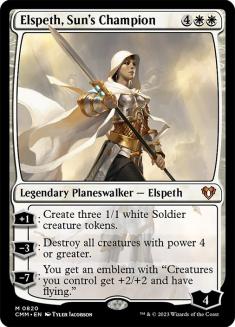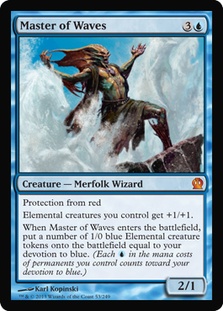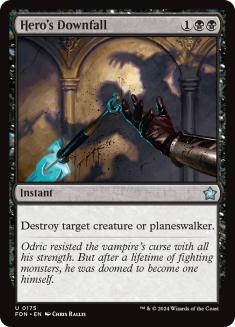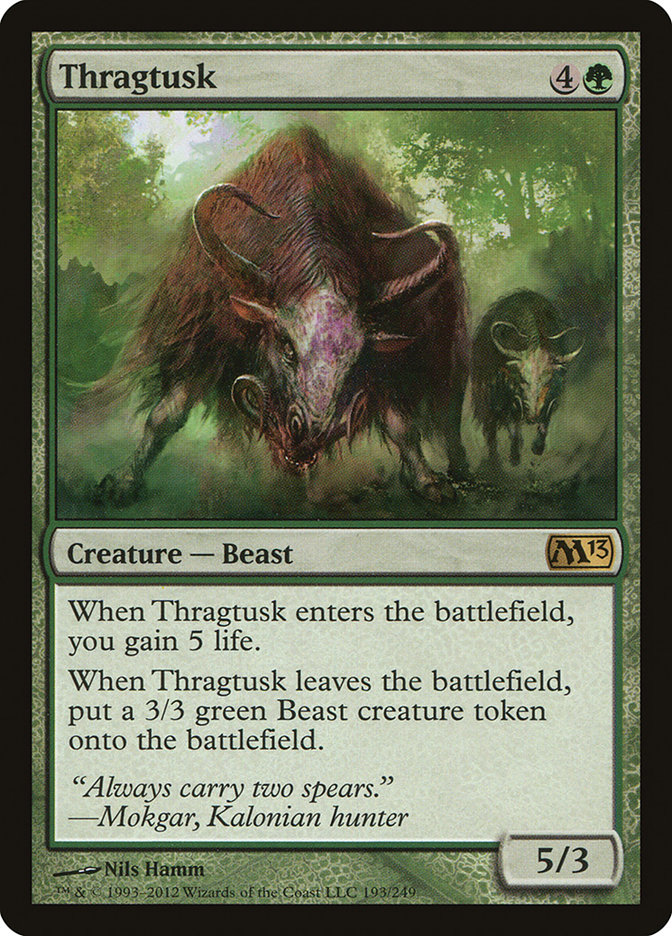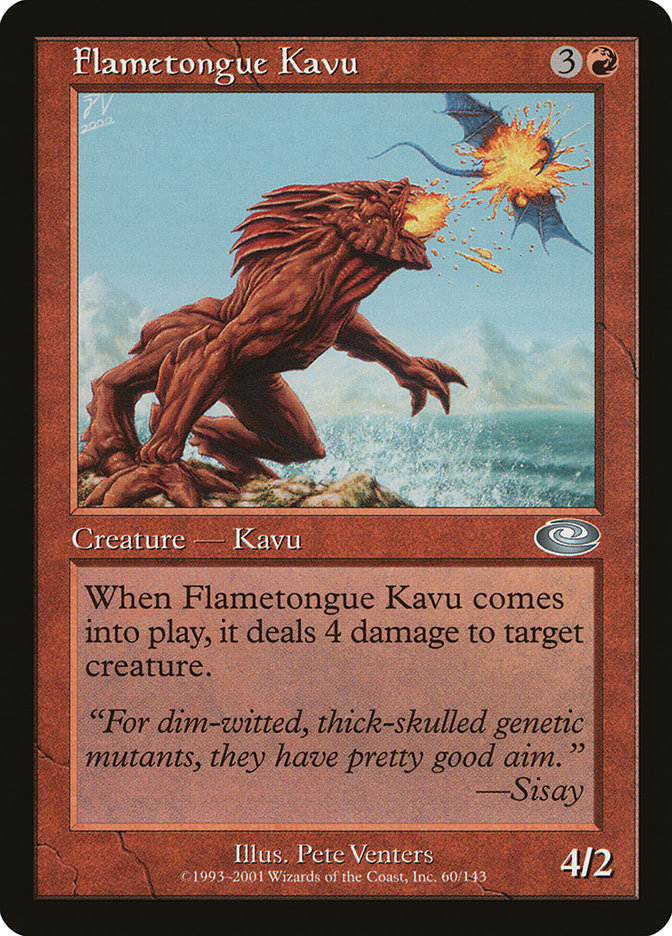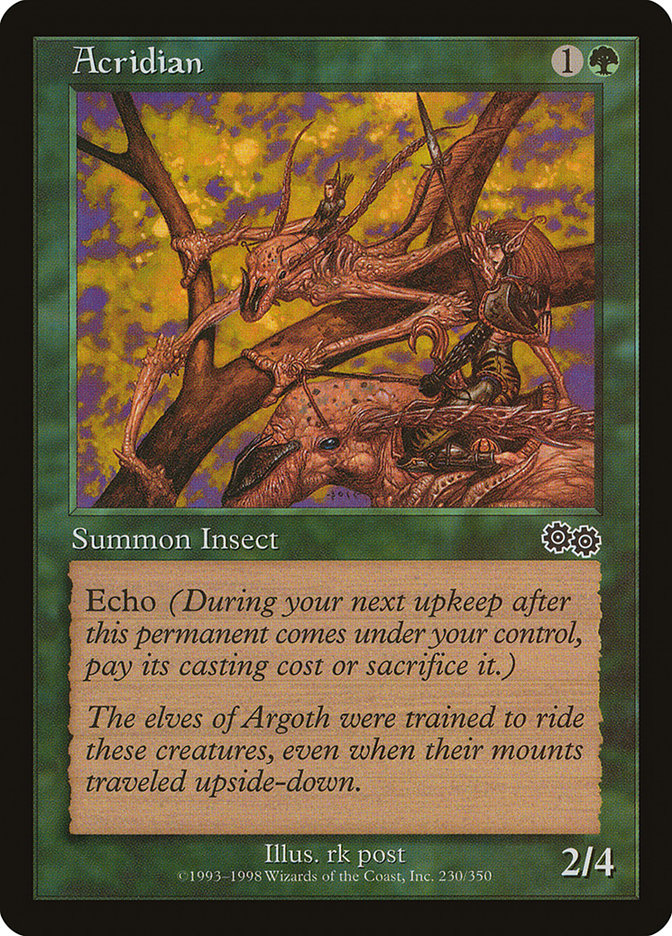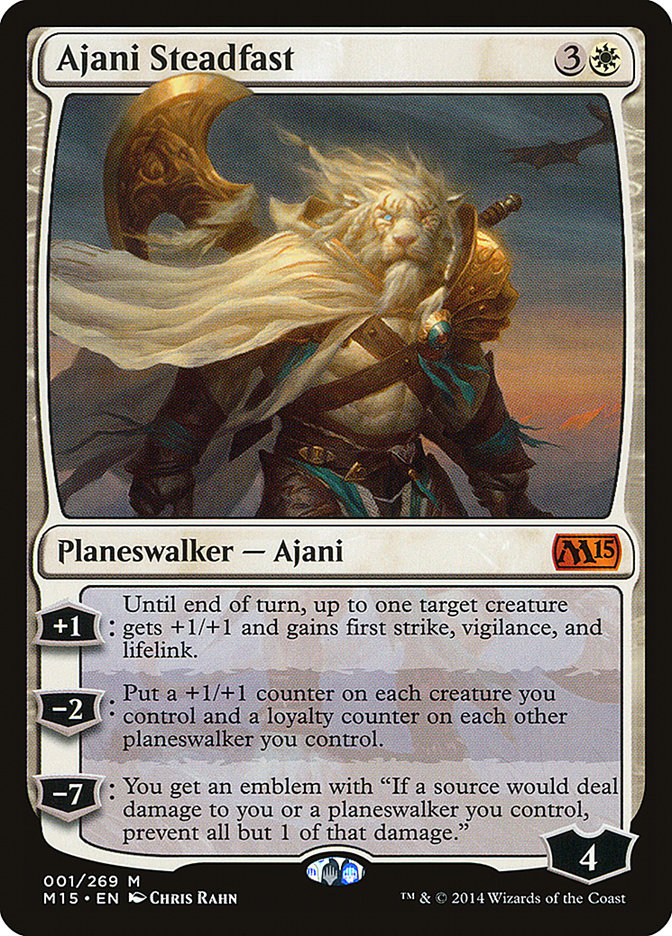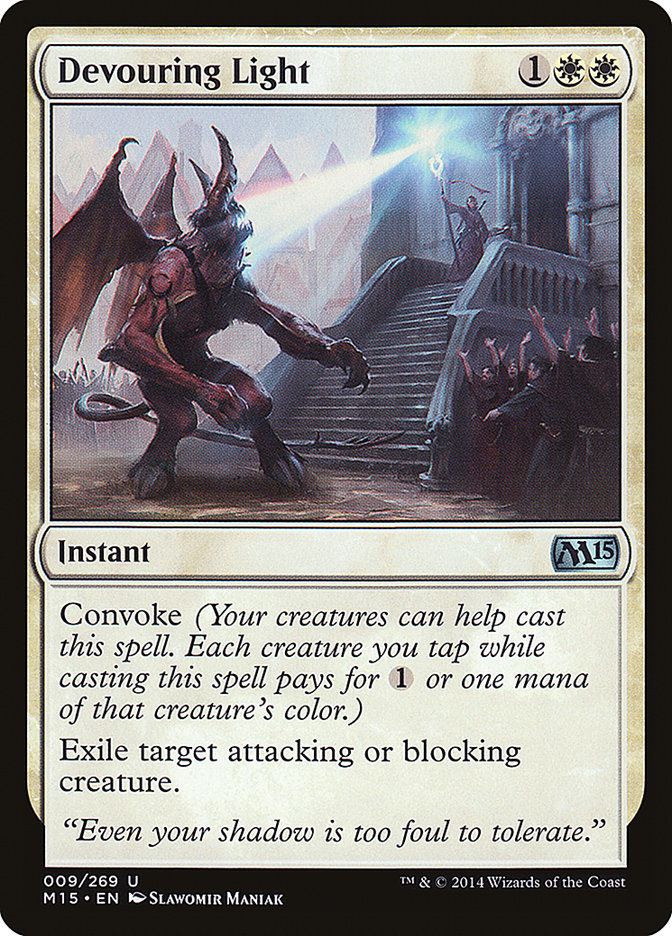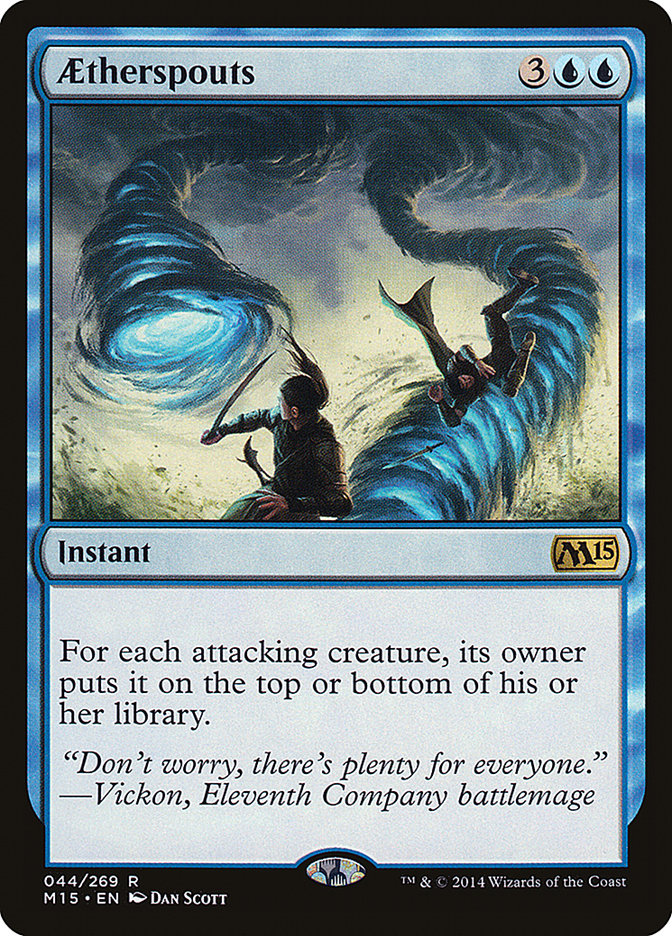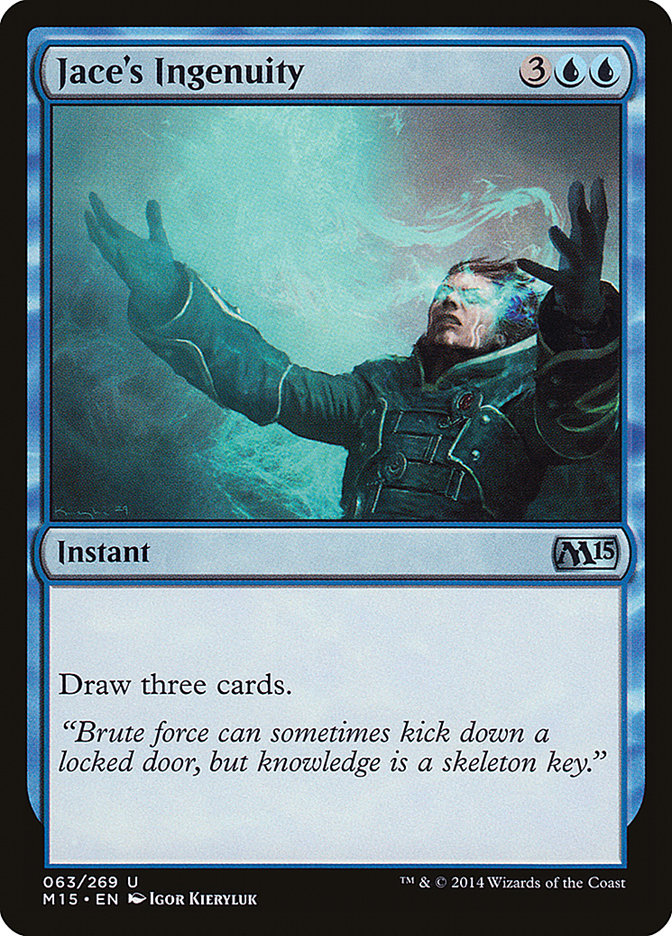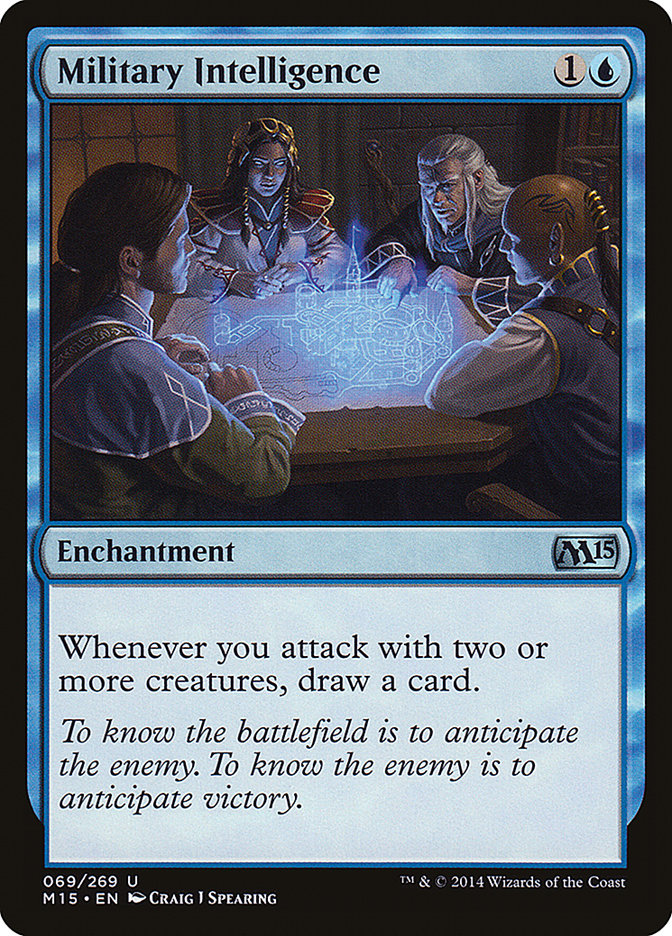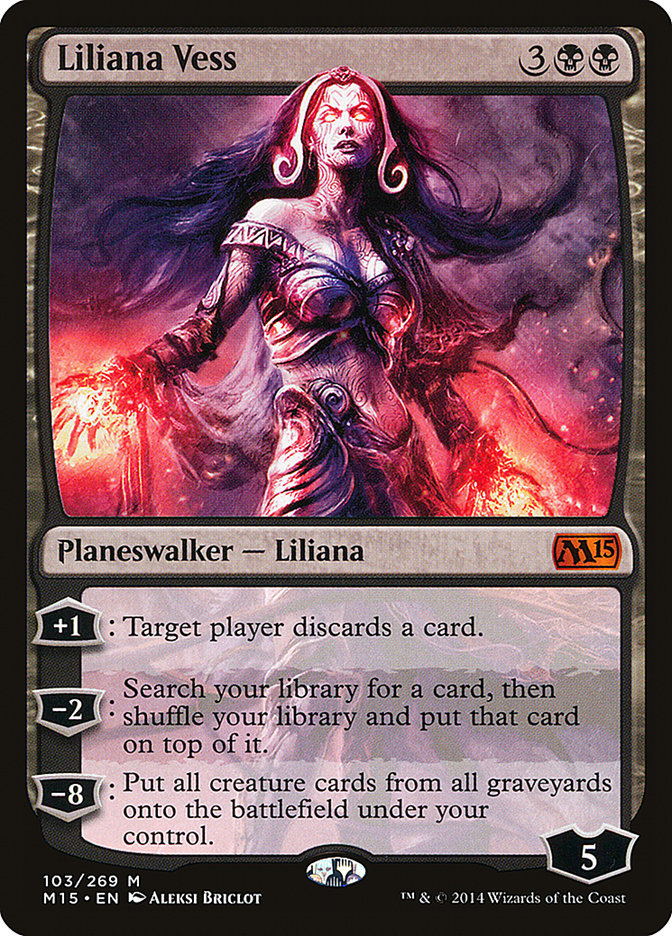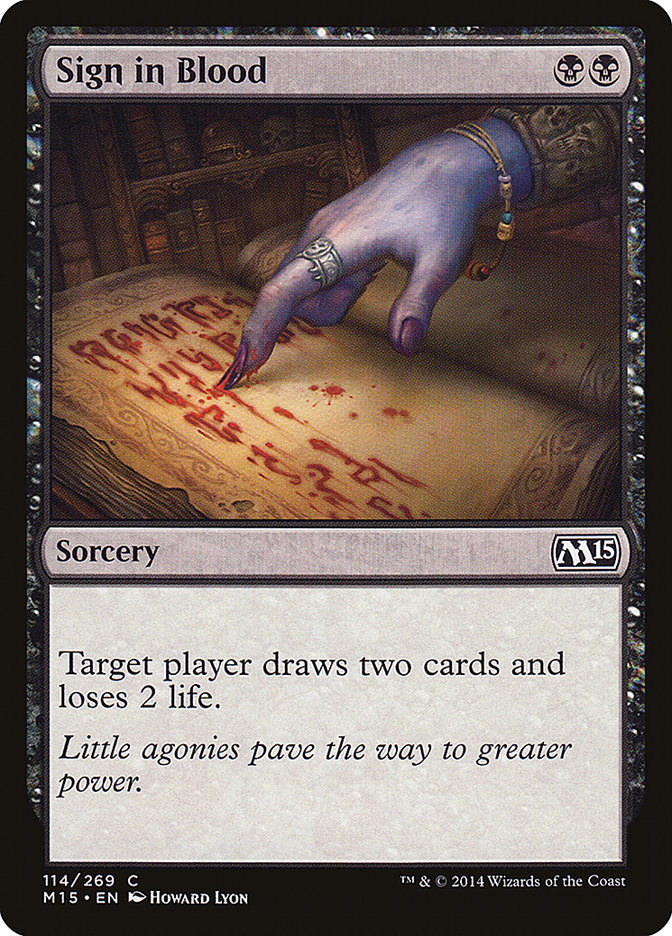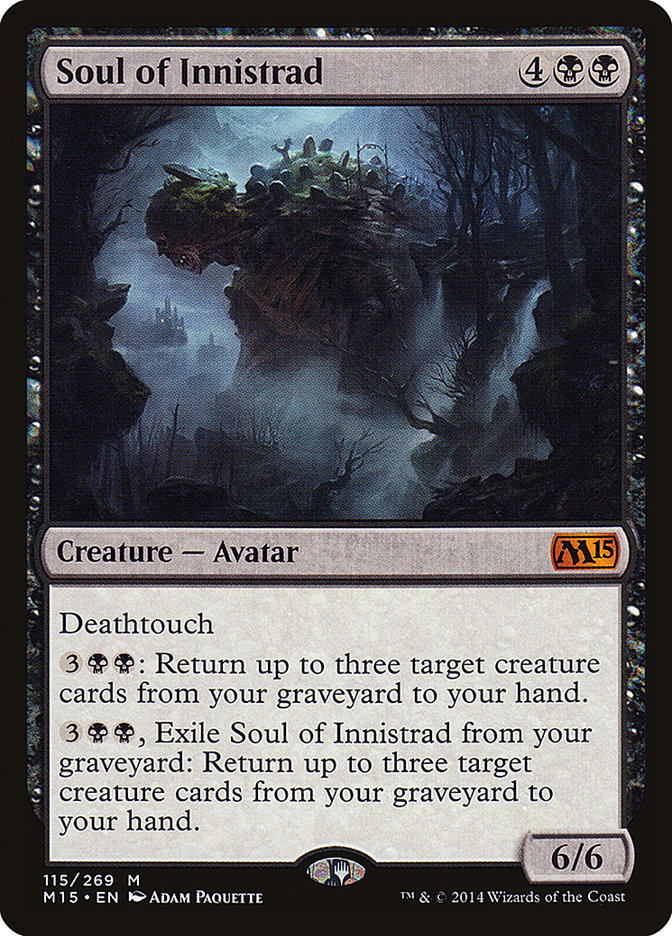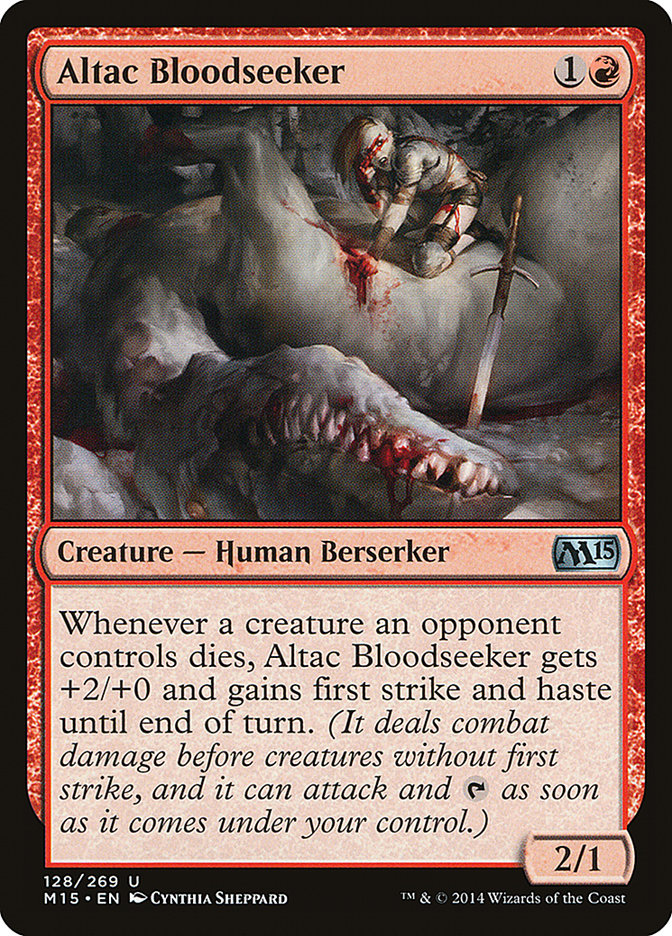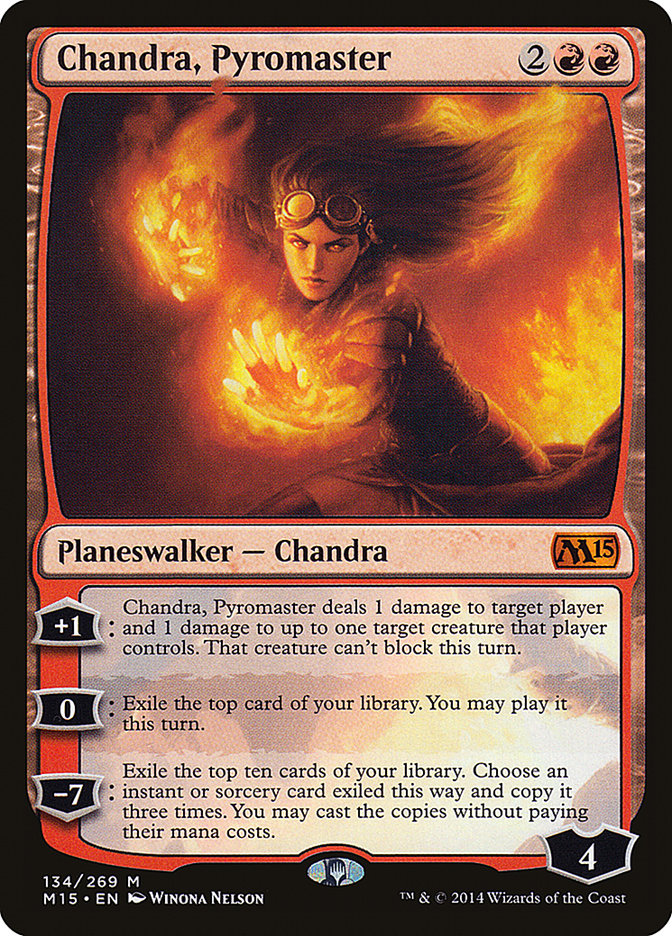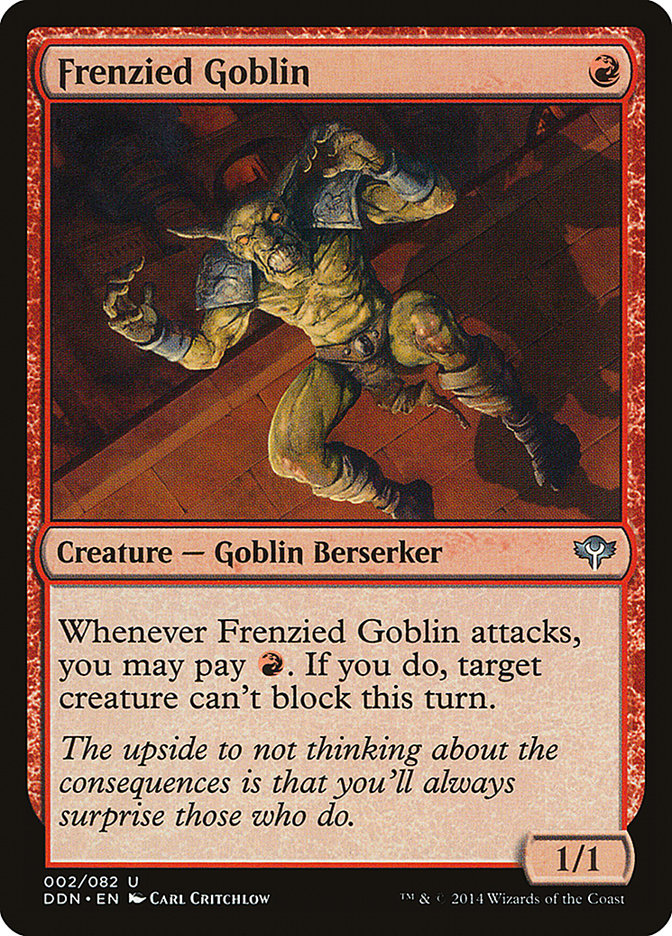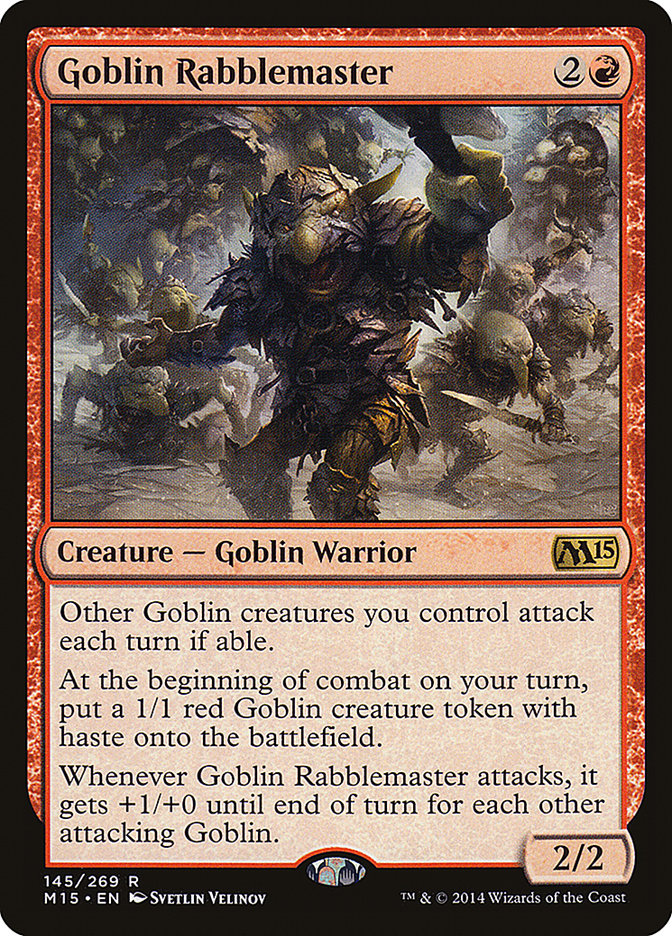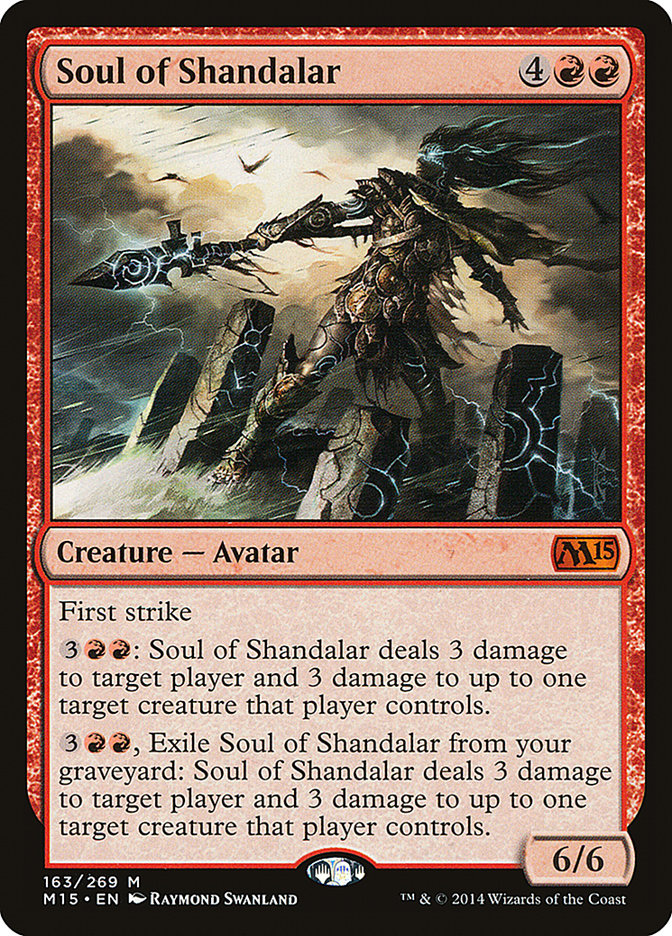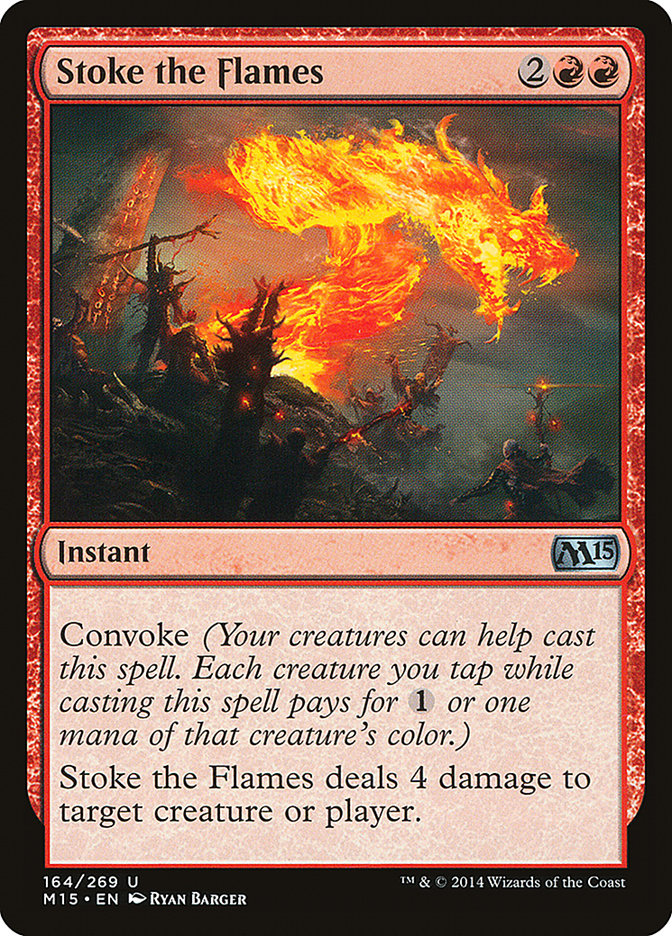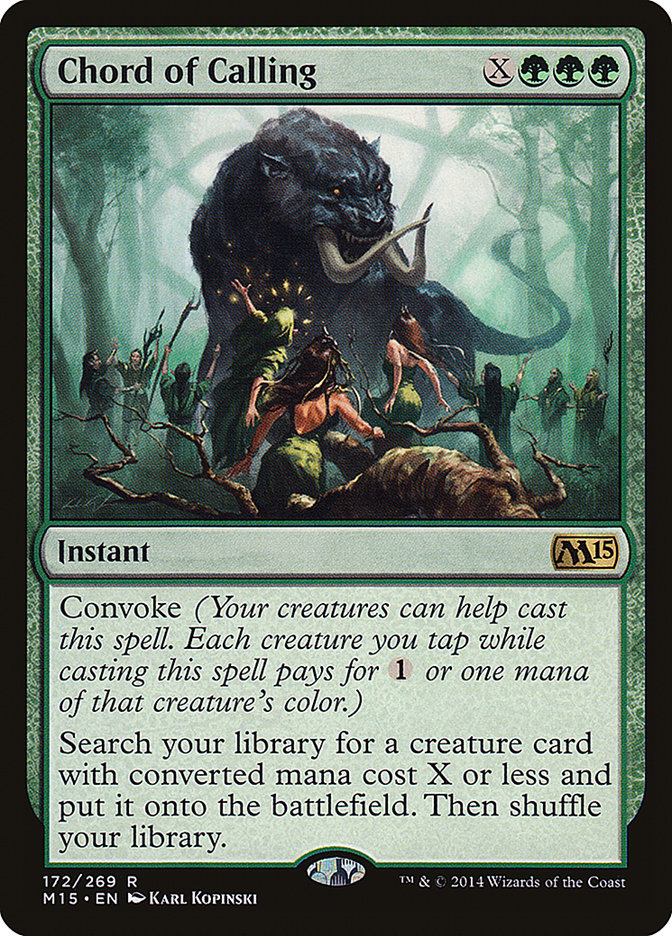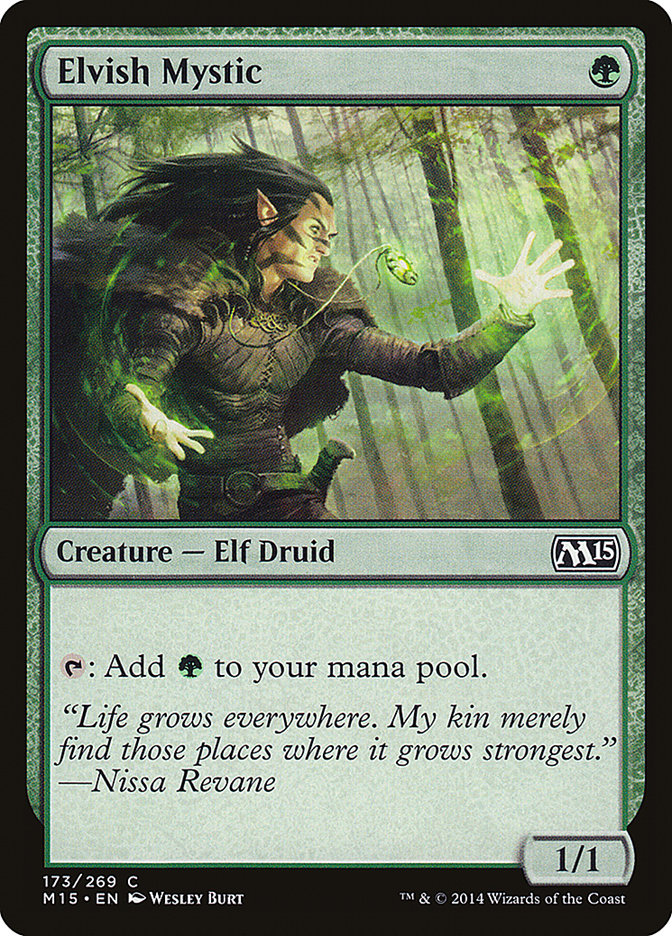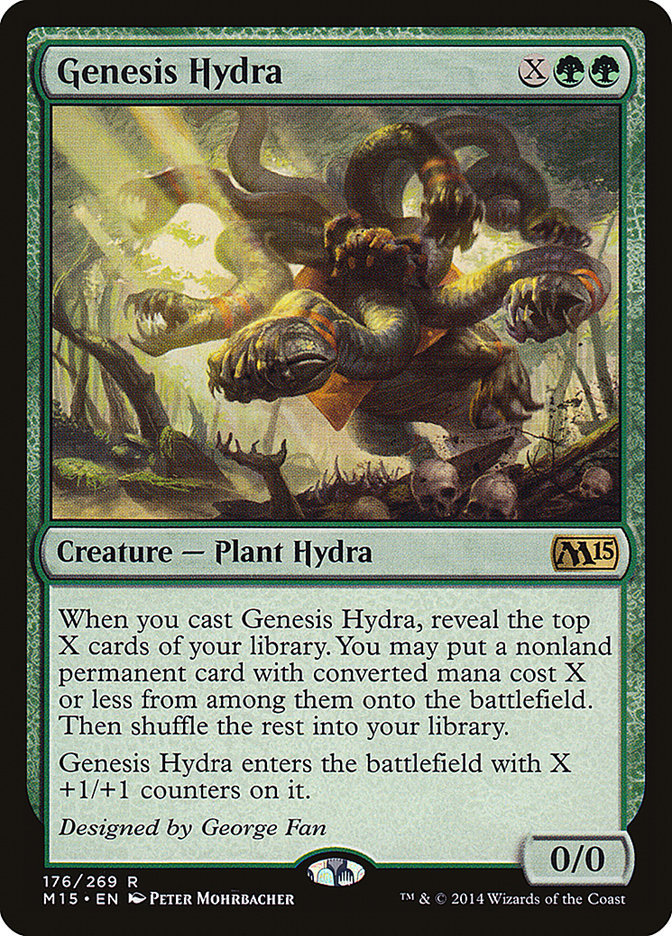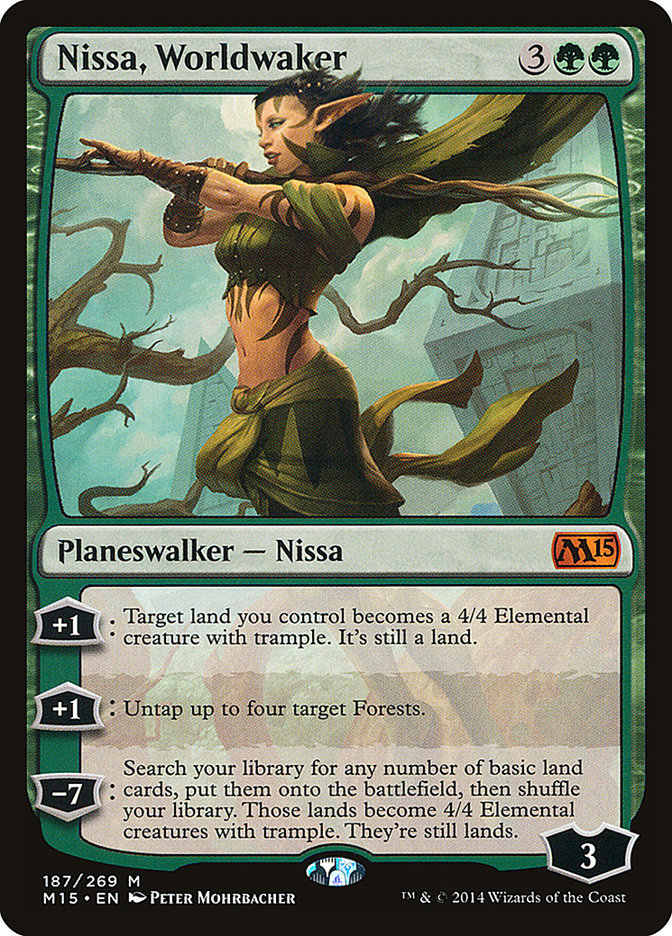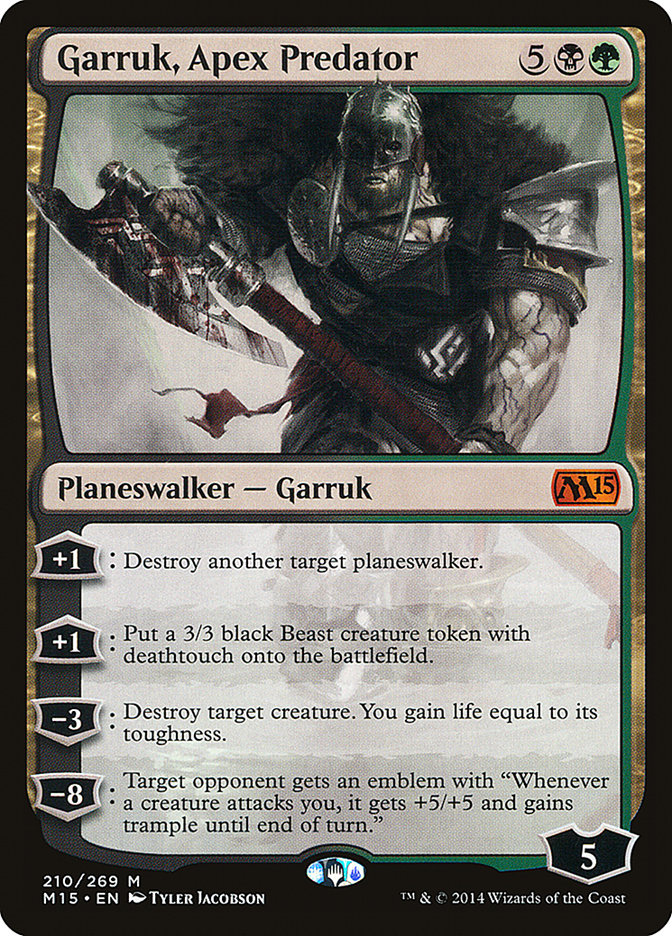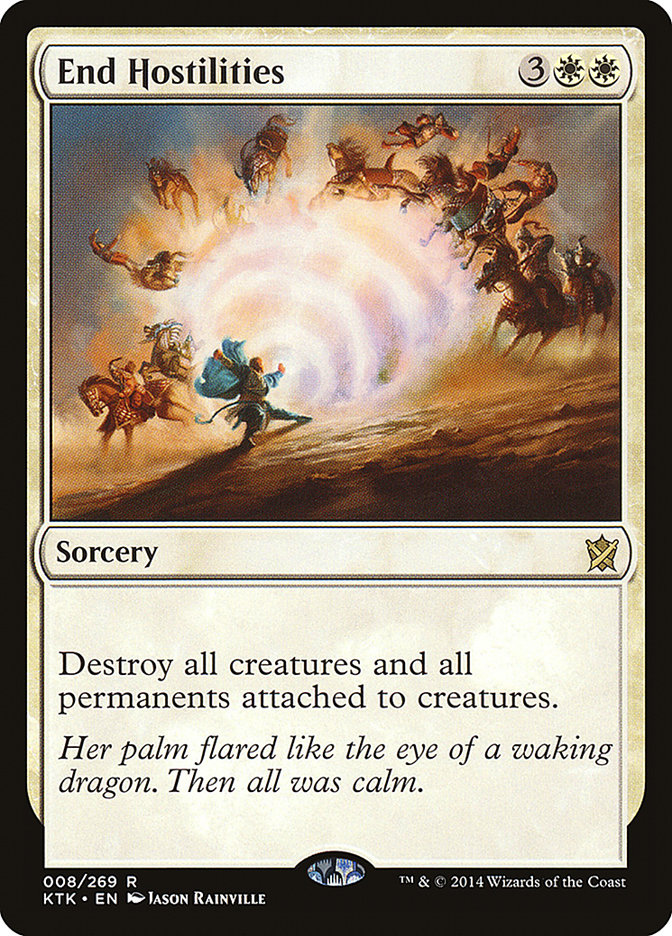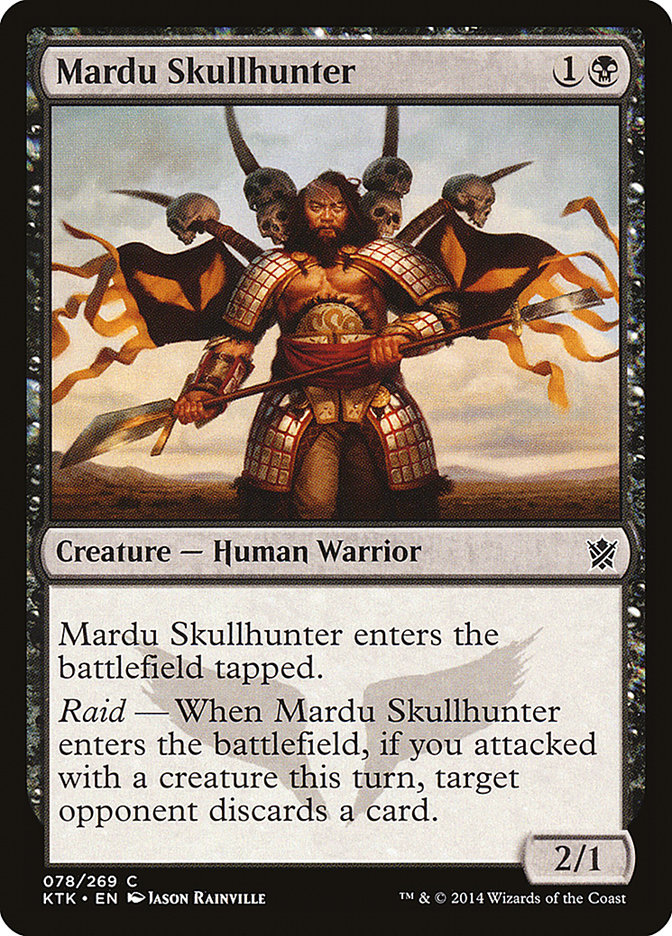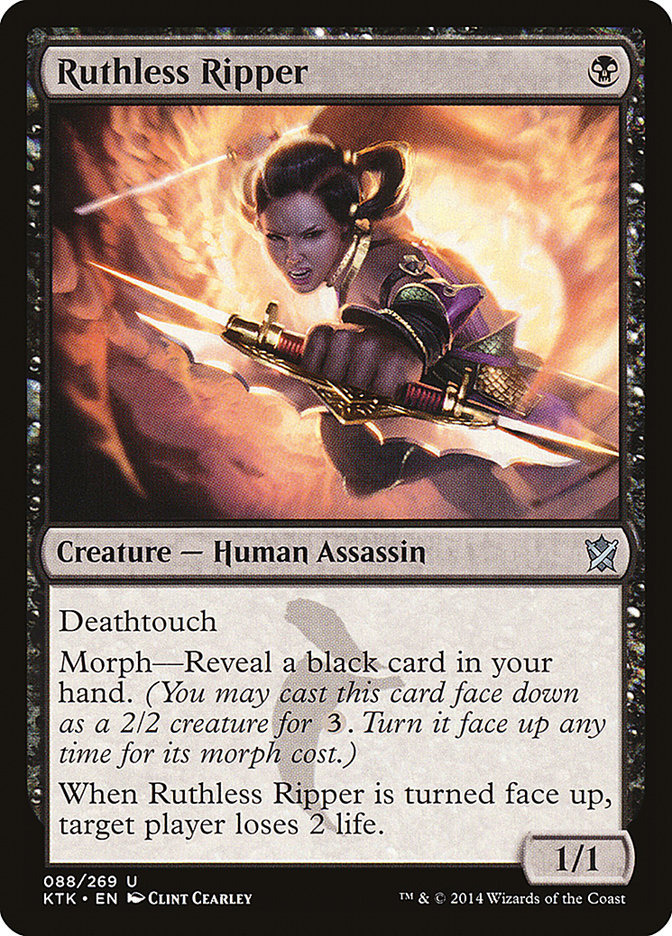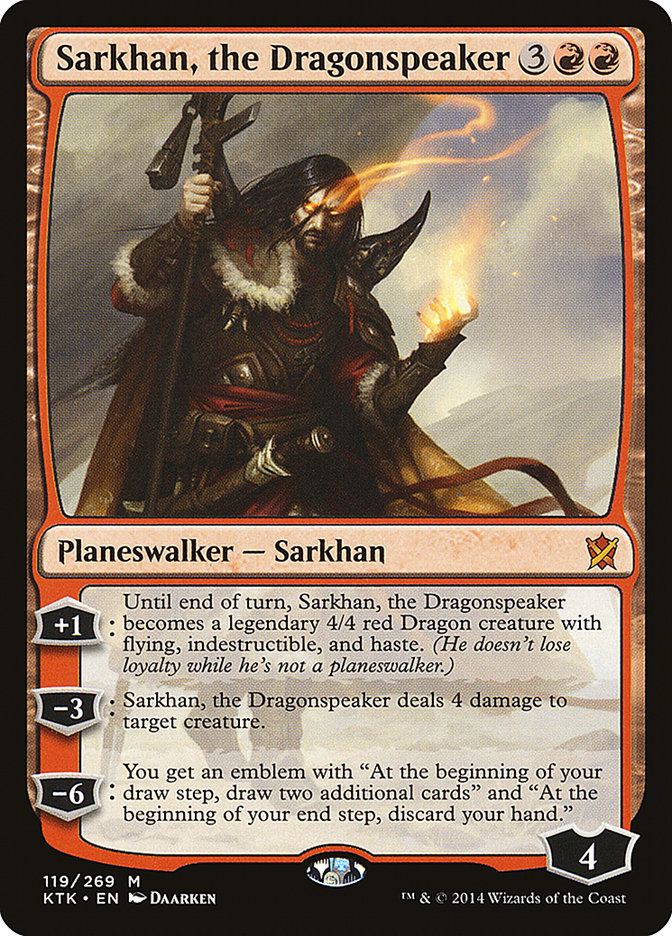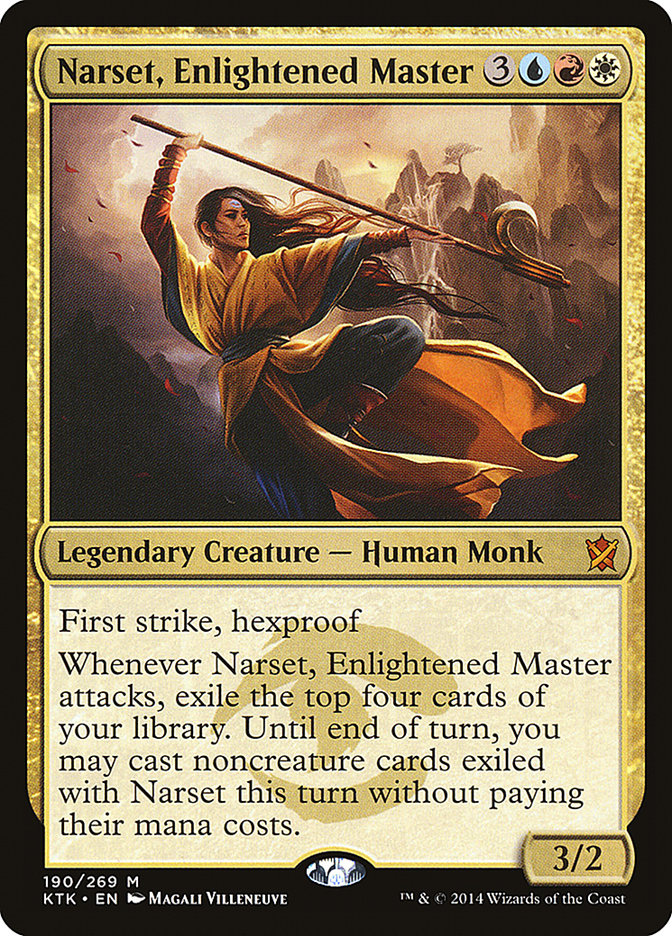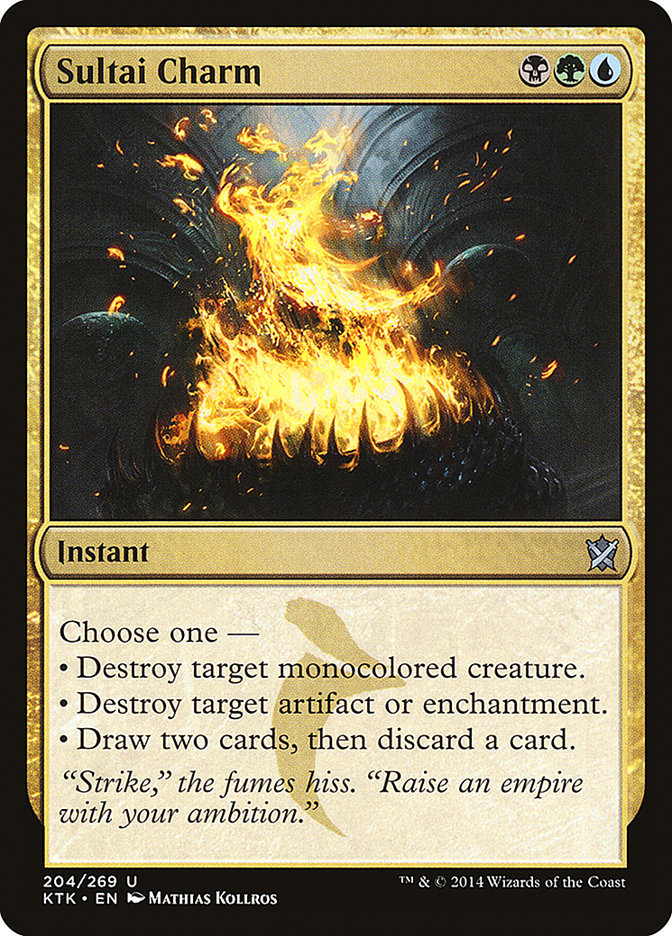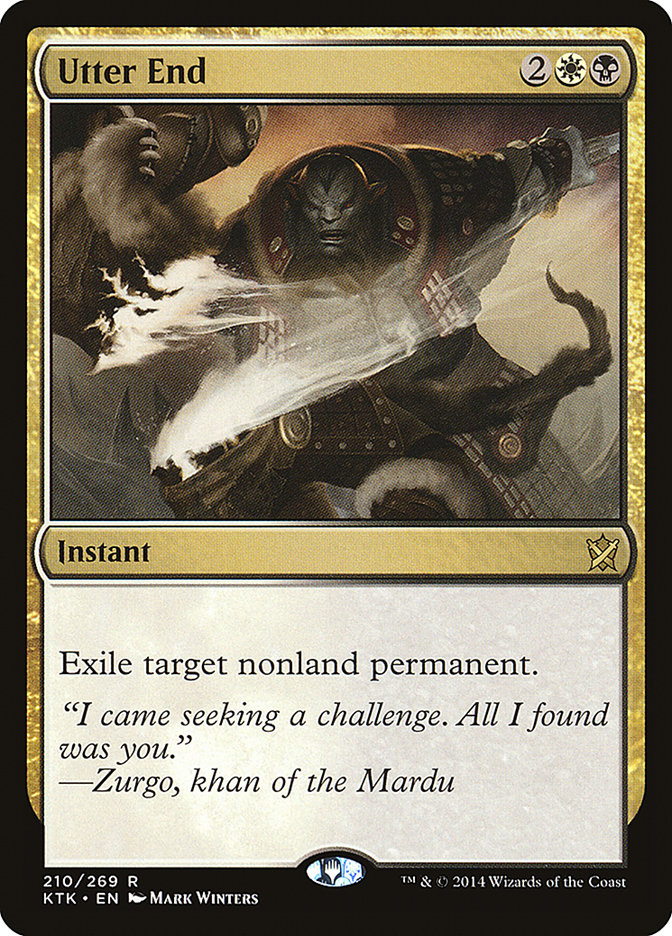We don’t know what the future will hold.
This is true in life, and it is certainly true in Magic when it comes to making predictions about the future with only partial information. There is a lot
you can predict when it comes to seeing a little bit of a spoiler. But sometimes, even missing a single card from a spoiler can make a huge
difference.
Imagine if you will, the world of Standard if any one of these cards hadn’t been printed in Theros:
In older formats, you can even name specific single cards without which the world is wildly different. Can you imagine what Standard would have looked like
a few years ago without this card:
What might be the most dramatic example of this phenomenon is this:
It was over ten years ago now, but the entire landscape of Standard was defined by the existence of that card, and most of the creatures in the format were
simply not playable because it existed. Check out this list from Grand Prix: Milwaukee 2002:
Creatures (4)
Lands (62)
Spells (178)
- 4 Counterspell
- 4 Chainer's Edict
- 4 Urza's Rage
- 4 Duress
- 4 Exclude
- 10 Mountain
- 20 Island
- 4 Sleight of Hand
- 4 Diabolic Tutor
- 4 Memory Lapse
- 4 Terminate
- 4
- 4 Insidious Dreams
- 4 Compulsion
- 4
- 4 Chromatic Sphere
- 4 Concentrate
- 4 Sky Diamond
- 4 Marble Diamond
- 4 Charcoal Diamond
- 4 Disrupt
- 4 Hobble
- 4 Dromar's Charm
- 4 Wild Research
- 4 Prophetic Bolt
- 4 Yawgmoth's Agenda
- 4 Void
- 4 Repulse
- 4 Recoil
- 4 Probe
- 4 Opt
- 4 Fact or Fiction
- 4 Addle
- 4 Absorb
- 4 Tainted Pact
- 4 Syncopate
- 4 Peek
- 4 Innocent Blood
- 4 Battle of Wits
Sideboard

While obviously this is a wild deck, and it certainly didn’t need Flametongue Kavu, it remains that the card was so crazily powerful in its moment that
Huey decided to include four copies of the card in his 244-card deck. He was eventually bested by Neil Reeves playing Psychatog splashing
Flametongue Kavu.
Single cards can matter, so no matter what kind of speculation we try to do with Khans of Tarkir Standard, we have to recognize that we’re largely shooting
in the dark – at least until the spoiler is complete.
What We Can Work With
One of the most important things we can do when we’re trying to theory-craft towards the future is look to the bits of the past that offer insight.
In this case, the most important thing to remember is that the root of a new Standard is always based on the previous Block Constructed event. Finding
information can sometimes be a wee bit tricky on the new Magic: the Gathering website, but with some effort you can figure out what decks were the best
performing Standard decks from that event. Here they are, without corrections based on the weighting of opponents (like I might usually do), but rather just looking
at point totals:
25 Points
Eric Damain Andrews – Esper Control
Patrick Chapin – Abzan Midrange
Franck Dubus – B/G Constellation
Carlos Moral – Black Aggro
Josh Utter-Leyton – Sultai Control
Wei Yifan – Abzan Constellation
24 Points
Matt Bartley – B/G Midrange
Fernando Gomez – Jund Midrange
Cory Lack – Abzan Midrange
Maxime Lenglet – Naya Midrange
Raphael Levy – U/B Inspired
Gabriel Nassif – Sultai Control
Paul Nemeth – Sultai Control
For the aggressively inspired among us, this probably looks pretty bleak. On the other hand, it does seem like there is a lot of evidence that the format
is going to be green-centric, primarily on account of the King of Tomorrow’s Standard:
Dealing with Courser of Kruphix is likely going to be the first question that people ask themselves when it comes to Standard. Courser isn’t the same as a
lot of controlling permanents; sitting in play with a huge butt makes the aggressive decks squeamish. 2/4 is a lot to deal with when you’re looking at the
typical aggressive creatures.
I still remember being paired against Joseph Crosby at Grand Prix Memphis way back in 1999. He was deploying a ton of little red weenies, Goblin
Cadets on turn 1, and a Goblin Cadets and Goblin Patrol on turn 2. On turn 2, I cast this:
An Albino Troll he could have handled. Instead he sat there for a second, smiled and looked up at me, and said, “That is the biggest damned creature I have
ever seen.”
Obviously, there are much bigger creatures out there than a 2/4, but for the hapless weenie deck, it really is a huge brick wall. There is a long history
of cards like Courser of Kruphix which really stop the beats, but none of them have had the upside of Courser, adding actual card advantage and life gain to the mix of a defensive body. Courser might not be Flametongue Kavu, removing the ability to even play certain creatures, but it
will be so ubiquitous that you’ll need to figure out how to handle the card, and it might make aggressive decks very hard to be successful with.
The top three true aggressive decks at that Pro Tour looked like this:
Carlos Moral – 8-1-1 – Black Bestow – 18th
Creatures (30)
- 4 Tormented Hero
- 4 Agent of the Fates
- 2 Mogis's Marauder
- 4 Pain Seer
- 4 Herald of Torment
- 4 Spiteful Returned
- 4 Gnarled Scarhide
- 4 Master of the Feast
Lands (22)
- 22 Swamp
Spells (8)
Sideboard

Stanislav Cifka – 7-2-1 – Boros Heroic – 5th
Creatures (20)
Lands (20)
Spells (20)

Jared Boettcher – 7-1-1 – W/u Aggro – 10th
Creatures (20)
- 4 Battlewise Hoplite
- 4 Favored Hoplite
- 1 Hopeful Eidolon
- 4 Hero of Iroas
- 3 Brimaz, King of Oreskos
- 4 Eidolon of Countless Battles
Lands (21)
Spells (19)
Sideboard

The Black Bestow and the WW/u Heroic decks choose the Eggy Weggs method of beating Courser (all the eggs in one big, powerful basket), and the Boros deck
mixes this with the opposite method: true swarming with Akroan Crusader and Launch the Fleets.
In essence, we can sum up the base we’re building off of as:
Mostly G/x Midrange
BU/x Control
Assorted Aggro (mostly White, Red, and Black)
This isn’t to say that these are going to be the only decks possible, merely that these will have the most raw material available to build on top of.
Adding M15 to the Block
In this universe, it is likely that there are only a few smatterings of cards that are going to end up mattering. Playing it as safely as possible, here
are the most likely cards to see maindeck play:
While it is possible Ajani Steadfast might end up playing teammate in a Superfriends style deck (with the –2 ability) it is also possible that
Ajani Steadfast could help an aggressive white deck swarm or push through (+1 and –2). After the rotation, I expect this is going to be a hugely successful
card.
Both as a single card that can remove a Courser of Kruphix for an aggressive deck, and as a primarily defensive card for various white (probably
white/green/x) midrange lists, this card is probably going to see more play, especially after the options for removal shrink slightly with rotation.
In a U/B or Sultai control deck (Sultai over Grixis or Esper simply because it is likely Khans of Tarkir will add a lot more for Sultai), this card is very
nearly a Supreme Verdict in many situations. Sometimes it will be much worse, but other times, it will be absurdly more powerful, especially if you are
running your own creatures on defense.
This card is already seeing play in Standard now and seems like an easy fit to any control deck, especially given the existence of Aetherspouts or cards
like Utter End, which can mask which of the many instants you might have that could effect the game.
For a WW/u deck (or any aggressive deck that runs Blue for that matter), this will be a great way to recoup cards that are invested into building up a
Heroic little creature that has a friend. Bident of Thassa will still be around, but not every deck can afford that much investment in Blue.
Depending on how Khans of Tarkir shakes out, this could well be a maindeck card; in the past, Negate has sometimes made it as a multiple-main kind of card,
but we should definitely be thinking of it as an option.
Her time seems to be on the rise. Already, we’re seeing Lili show up here and there in Standard, but as the format loses cards, you can expect this already
powerful planeswalker to be even more powerful than it currently is, likely making the cut in Black-based midrange and control decks.
A great card for an aggressive black deck and an okay card for a more controlling deck like Jund Midrange or Abzan Midrange, Sign in Blood is currently
being used a little in some Standard Black Devotion lists, but I expect will see more play after the rotation.
In a midrange world, it is hard to imagine this card not being a powerhouse.
This card is already on the cusp of being good enough. With the card pool shifting, this card could make the cut, not as a card that gets haste so much as
a card that becomes 4/1 first strike.
We already know that this card is good. If we think about the Block lists, imagine adding this to the R/G Elspeth lists or Jund Midrange. Like Liliana
Vess, this card is likely to be stronger in a smaller format. Unlike Liliana Vess, this card was already often seeing multiple copies in maindecks.
While this card didn’t end up making the cut in Rabble Red, the top-performing Red deck from PTM15, with over sixteen cards leaving that deck in rotation,
it might be looking for a card like this, which incidentally helps dodge Courser, at least to some small degree.
While it’s hard to imagine this card getting worse as the format gets smaller, it is worth considering the loss of effective small creatures and Mutavault
as a real cost to the power of this card. Where other two-drops in an aggressive deck can be semi-redundant, three-drops are often in need of support in
aggressive Red decks. I think this card will absolutely still be good, but whether it gets weaker or stronger in the next Standard is a very different
question than whether a planeswalker does, for example. Unless Khans has some solid one- and two-drops for Red, I think it might actually get worse, though
only barely.
While not as scary-feeling as Soul of Innistrad, I expect the currency on this card to rise.
Already one of the only cards that has truly made a huge impact on current Standard, it will certainly be a card I can imagine as a part of the extension
of the successful decks with Red from the last Block Constructed, and that is whether they are controlling, midrange, or aggressive. Given the current
state of Standard, Stoke is likely to take a hit, as it won’t have the support cards it once did in the Burn deck, but thought of as an extension of Block
this card is going to be well-positioned.
We’re already seeing what this deck can do in midrange lists of all kind. It is very easy to imagine this card making a big impact by bypassing the colored
requirements for many of the cards we’ll be seeing in Khans of Tarkir.
The missing piece of the puzzle for a lot of the Block decks, we know how easily this fits into the shell of green midrange Planeswalker decks already.
Without a lot of the building blocks to make Green Devotion style decks as absurd, this card won’t be what it was in the previous Standard, but as an
imagined add-on to green midrange, it might actually be a stronger card than Chord of Calling when we think about what the midrange shells look like in
Block.
It is easy to imagine how Nissa would’ve been insane in Theros Block, and we know it is good enough in previous Standard to be a four-of in
planeswalker-based decks. This might be one of the backbones of the new format.
While we have Jund, Sultai, and Abzan as homes for this card, the interesting thing to realize is that all of those decks were successful Theros
Block Constructed decks. Garruk, Apex Predator might actually be a powerhouse when it gets more support cards and the format shrinks.
The New Cards
You might be asking yourself, “Well, what about Khans of Tarkir?”
Of course, Khans of Tarkir is important, but at this point, less than a third of Khans has been spoiled. In moments like this, it can be very difficult to
actually imagine what will have a big impact. As I mentioned earlier, we need to keep in mind the previous Block as the basis for most new decks. Once
again, those decks are:
Mostly G/x Midrange
BU/x Control
Assorted Aggro (mostly White, Red, and Black)
The gold nature of the set means that many of the cards are going to be quite prohibitive to try to play. However, with Temples, painlands, and fetches, it
won’t be insurmountable. Especially three-color cards though, will be a challenge to find homes for. With that being said, at this early date, I already
feel like some cards will be big players:
In traditional control decks, whether there is anything left of U/W Control or whether it is in something like Esper, Bant, or Sultai Control, this is
absolutely going to see some play, even at five mana. It looks possible that the format is going to slow down, and even if there aren’t many equipment that
are making a huge impact, bestow is still a real thing.
A Ravenous Rat with two power is absolutely going to help the aggressive decks that are planning on attacking anyway.
This card has a ton of applications for an aggressive deck, even if it isn’t a great one-drop. If you think of it as a three-drop which says “Reveal a
black card in your hand to both Shock your opponent and kill a creature in a fight with this card”, then I think this card might actually see play (at
least if there are other morphs it can hide among).
This card may not be a pure Stormbreath Dragon upgrade, but it is certainly mixing two of the most powerful aspects from previous red planeswalkers: the
immediate attacking of Koth of the Hammer and the controlling aspect of Chandra Nalaar (an incredibly underrated planeswalker). For those naysayers who
diss the ultimate ability of Sarkhan, the Dragonspeaker, to them I say, “Nay!” The ultimate ability on Sarkhan is an incredible one and actually makes me
believe that many decks that run Sarkhan will run four immediately. The drawback of previous versions of this card, whether it is Grafted Skullcap or
Bottled Cloister, was that they could be blown up, and you’d never get the rewards of the card. The risk was just too great compared to the reward
much of the time. Even still, the card effect had a powerful enough impact that they still were worthy playing.
Your opponent can’t get rid of an emblem. Believe me, I expect to be very willing to lose Sarkhan, the Dragonspeaker to gain this effect, or to take a turn
off from attacking. When you are drawing this many cards, you don’t even have to try to kill your opponent the same way any more; keeping up with this kind
of inevitability takes something like Sphinx’s Revelation, and the last time I checked it was rotating out.
This guy is the real deal and then some.
It is actually very hard for me to imagine this card not being decent. As a first striking, hexproof creature, it only dies to sweep or a fight that you’re
either expecting to lose or are surprised to lose. I think we might see this as a go-to card for either WU/r Control or UR/w Control – Jeskai mages
rejoice!
Obviously a practically premade card for Sultai Control, I’d be surprised if this card didn’t see somewhere between “some” and “a lot” of play.
Expensive though it may be for a one-for-one removal spell, the versatility feels as though it will immediately make the cut, in some numbers, in Esper
Control, Orzhov Control, and Abzan. Without a pre-existing Mardu deck to take advantage of, I’m not sure we’ll see much on that end, but that depends on
how much Wizards of the Coast pushes each faction.
The Known Unknowns
All that we can do now is wait. The spoilers are going to be coming in at a steady flow now, and I expect to be glued to my RSS feed, reading and rereading
every new bit of information as I prep for Honolulu. Pro Tour Khans of Tarkir is about a month off, and I intend to do as well as I can.
In the meantime, it is time to think and brew.
This weekend is St. Louis. I’ll see you there, ready to battle.

